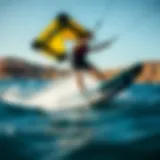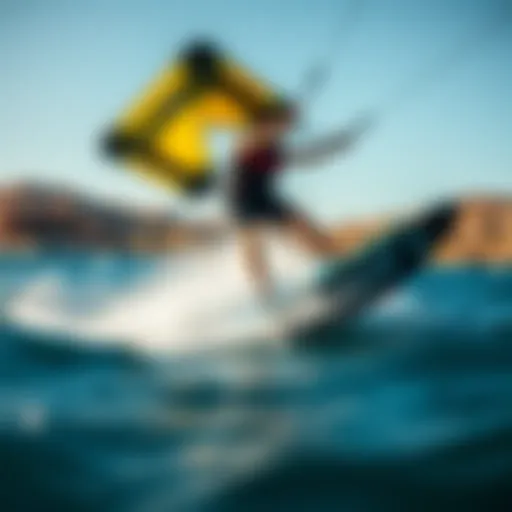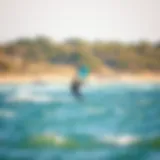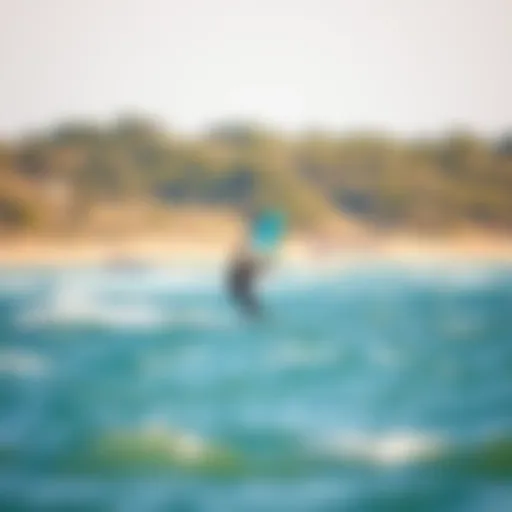Exploring the Depths of Wing Surfing and Foiling
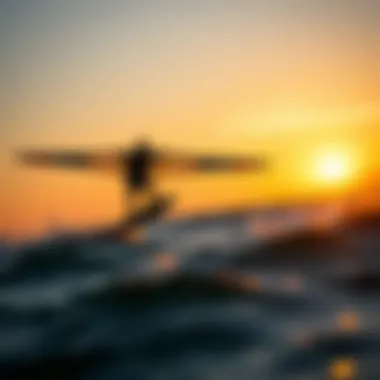
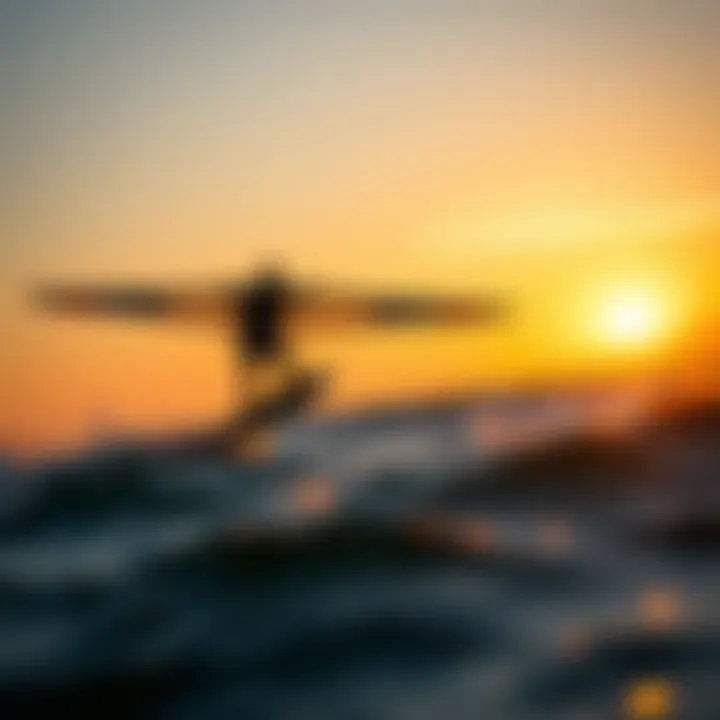
Intro
Wing surfing and foiling have gained traction in the world of watersports, attracting enthusiasts from all walks of life. This sport combines the thrill of traditional windsurfing with the graceful movement that foiling provides, creating an exhilarating experience on the water. But what exactly is wing surfing? Simply put, it involves riding a board with a wing that catches the wind, lifting the rider above the water with the help of a hydrofoil. This unique setup allows surfers to glide smoothly, even on small waves or flat water.
As we navigate the intricacies of this sport, it’s important to understand that wing surfing is not just a passing fad. Its roots can be traced back to the evolution of various water sports, with influences from windsurfing, kitesurfing, and even traditional surfing. Each has contributed to the techniques and gear that define wing surfing today.
While professionals may make it look easy, there’s a learning curve for beginners. The sport requires a solid grasp on various techniques and safety practices to ensure a secure and enjoyable experience. In this guide, we’ll break down essential tips and techniques for both novices and experienced riders, explore the necessary safety measures, and look at the gear that can support your journey into wing surfing and foiling.
Diving into this multifaceted world not only enhances your individual skill set but also enriches your appreciation for the dynamics of wind and water. Whether you’re looking to soar above the waves or simply want to understand the mechanics behind it, this guide is designed to enlighten your path in the captivating realm of wing surf foiling.
Prelims to Wing Surfing Foil
Wing surfing foil represents a unique synergy between traditional surfing, windsurfing, and the mechanical advantages offered by hydrofoils. In recent years, it has surged in popularity, captivating watersport enthusiasts and beckoning newcomers eager to taste the thrill of gliding above water. This section aims to shine a spotlight on the world of wing surfing foil—exploring its definition, historical roots, and evolution.
Defining Wing Surfing Foil
To understand wing surfing foil, it’s crucial to begin with its core components. Essentially, it combines a hand-held inflatable wing with a board that is mounted on a hydrofoil. The wing, which resembles a small parachute, catches the wind, allowing the rider to glide across the water. Meanwhile, the hydrofoil—a submerged wing—lifts the board, providing a sensation similar to flying. This interaction between wind and water transforms what could be a bumpy, choppy experience into a smooth, effortless glide.
The beauty of wing surfing foil lies in its accessibility. Unlike traditional windsurfing, which requires extensive gear and wind conditions to be just right, wing foiling allows for a broader range of wind conditions and smaller waves. It invites athletes of different skill levels—from staunch traditional surfers seeking a new thrill to complete beginners eager to learn.
Historical Context and Evolution
The origins of wing surfing can be traced back to the late 20th century when windsurfing gained traction. Various inventors experimented with using inflatable wings and foils to enhance the experience. However, it wasn't until the early 2010s that the sport began to gain serious popularity. Pioneers in the field noticed that by marrying these elements with wakeboarding and kitesurfing principles, a new sport began to emerge.
By 2018, the breakthrough in hydrofoil technology and durable materials made wing foiling feasible for the masses. With the improved design and ease of use, the sport burst onto the scene, leading to a burgeoning community of enthusiasts, competitions, and even instructional clinics around the globe.
This evolution—from its initial niche interest to a mainstream water sport—highlights not just technological advancement but reflects societal shifts toward more exhilarating water activities and outdoor lifestyles.
"The wave mechanics and wind dynamics have evolved, but the essence of freedom and exploration remains palpable."
As we delve deeper into the nuances of wing surfing and foiling, it will expose various foundational concepts, techniques, gear choices, and safety considerations. Ultimately, this deeper understanding will empower both seasoned athletes and newcomers to navigate the exciting yet intricate world of wing surfing more effectively.
Fundamentals of Wing Surfing
Understanding the fundamentals of wing surfing is pivotal for any enthusiast looking to tackle the waves with confidence. At its core, wing surfing combines aspects of sailing, surfing, and kitesurfing, allowing riders to harness the wind’s power while gliding over water on a surfboard with a foil attached. This sport isn’t just about the thrill of riding waves; it also offers profound benefits such as enhancing balance, improving core strength, and gaining a deeper appreciation for wind dynamics and aquatic environments.
In grasping the fundamentals, participants increase their overall awareness of water safety, develop proper techniques, and truly connect with the sport. By focusing on mechanics and basic skills, newcomers can more readily progress, as these fundamental elements set the stage for advanced maneuvers and tricks.
Understanding the Mechanics
To appreciate wing surfing fully, one must first delve into the mechanics at play. At the heart of this sport is the interaction between the wing, the foil, and the water surface. The wing acts like a sail, capturing the wind and providing lift, while the foil, submerged in water, elevates the board above the surface. When done correctly, this setup reduces drag and enables smooth gliding over waves or flat water.
Here’s how the components interact:
- The Wing: Typically made of a lightweight material, the wing can be inflated to catch wind efficiently. Riders hold onto the wing, angling it to control speed and direction.
- The Foil: The foil comprises a mast, fuselage, and wings, designed to lift the board as speed increases. Lift occurs due to the hydrofoil’s shape, which changes water pressure, allowing riders to skim above the water.
- The Rider’s Position: Proper stance is crucial. Keeping a low center of gravity and bending knees can drastically affect balance and maneuverability. Shifting weight forward or backward alters speed and control.
Overall, understanding these mechanics helps participants optimize their performance, fine-tune their movements, and make informed decisions based on varying wind and water conditions.
Basic Techniques for Beginners
For those just starting, the world of wing surfing can seem daunting, but with the right techniques, anyone can learn to ride effectively. Here’s a streamlined overview of foundational techniques for novices:
- Starting Position: Stand with feet shoulder-width apart, knees slightly bent, and weight centered over the board. Hold the wing with both hands, positioning it in front of you.
- Launching: Begin on flat water. Angle the wing to catch the wind at about 45 degrees. As the wind fills the wing, push down with your back foot and lean slightly to gain forward momentum.
- Balancing: Maintain a low center of gravity. Use your arms to steer and balance by shifting your weight from the front foot to the back foot.
- Turning: To turn, steer the wing in the direction you want to go and shift your weight correspondingly.
- Stopping: To halt, simply steer the wing into the wind while putting weight on your back foot; this will help you lose speed gracefully.
"Diving into wing surfing is like learning to ride a bike—imperative to practice until you find your balance!"
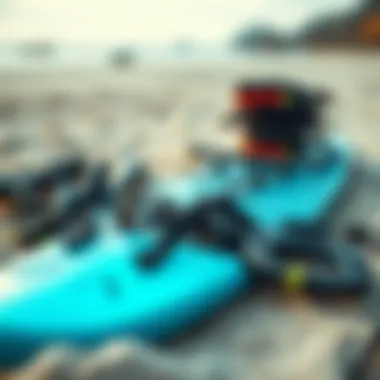
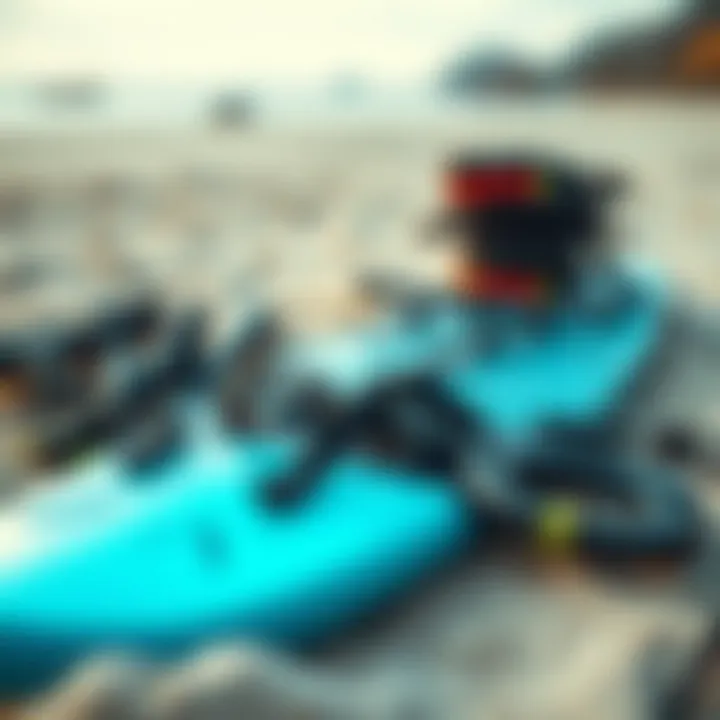
By practicing these basic techniques, beginners will build a solid foundation that fosters confidence and encourages safe progression in the sport. Over time, mastering these skills can lead to more complex maneuvers and an enhanced enjoyment of wing surfing.
Understanding these fundamentals not only demystifies wing surfing but also enriches anyone's experience, making the adventure on the water enjoyable and rewarding. For more information on wing surfing techniques and community insights, visit Wikipedia or participate in discussions on forums like Reddit.
As you continue exploring wing surfing, remember that every skilled rider was once a beginner, and practice is the key to unlocking the exciting world of foiling.
The Role of Foils in Wing Surfing
When one considers the art of wing surfing, the significance of foils shines bright. Foils are not just a pivotal part of the equipment; they redefine the very experience of gliding across water. Their role cannot be overstated as they enhance performance and influence the dynamics of the sport.
Foils work by lifting the board above the surface of the water, significantly reducing drag as the rider gains speed. This lift is governed by the principles of hydrodynamics. Essentially, as the board speeds up, the foil's design allows for a balance between lift and drag, enabling smooth sailing and effortless transitions over waves. The experience gained while using a foil can lead to a sense of flying, lending an exhilarating component to the sport. Moreover, foils contribute to stability and control, offering riders a chance to navigate challenging conditions that would otherwise be difficult in traditional surfing.
Types of Foils and Their Functions
The variety of foils available for wing surfing is vast, each designed to cater to specific riding styles, water conditions, and performance goals. Here are a few notable types:
- Freeride Foils: Known for their versatility, these are ideal for riders who enjoy a mix of speed and maneuverability. They cater to various skill levels and are often recommended for beginners.
- Race Foils: Designed for competitive scenarios, race foils are built for speed. Their elongated wings generate significant lift, allowing quick acceleration and high-speed runs. However, they require skill to manage effectively, particularly in chop.
- Surf Foils: Tailored for waves, surf foils excel in turning and carving through swells. They have a specific design to facilitate quick direction changes and smooth handling in more forceful wave conditions.
- Freestyle Foils: These foils are constructed for tricks and tricks, featuring a design that provides balance and control for jumps and spins, making them the go-to for athletes who thrive on performing aerial maneuvers.
Each type of foil offers unique benefits that can change a rider's experience drastically. Understanding the specific functions of these foils empowers riders to make informed decisions based on their style and goals.
Advancements in Foil Technology
As wing surfing continues to flourish, the technology behind foils has evolved radically. The latest developments have led to lighter materials, allowing for superior buoyancy while also enhancing durability. For instance, the shift from aluminum to carbon fiber has resulted in foils that are not only lighter but also stiffer, which translates to better performance on the water.
Additionally, hydrodynamic designs have seen significant innovation. Modern foils feature more refined shapes that reduce turbulence and increase lift efficiency. Computer simulations and advanced wind tunnel testing have helped manufacturers optimize the foil shapes to achieve optimal performance for racers and recreational riders alike.
Foil control systems have also matured. Adjustable mounts enable riders to fine-tune the angle of attack, making it easier to adapt to varying wind conditions without having to switch equipment. Software developments that allow real-time analysis during practice sessions are increasingly popular among professional riders.
In summary, the importance of foils in wing surfing is critical. They not only shape the dynamics of the ride but also drive the technological advancements that keep the sport fresh and exciting. As athletes and enthusiasts seek higher performance and engagement, foils will continue to play a central role in the evolution of wing surfing.
Essential Gear for Wing Surfing Foil
Selecting the right gear for wing surfing foil is pivotal for both safety and performance. The sport, which combines elements of traditional surfing, kiteboarding, and windsurfing, requires specific equipment to ensure a smooth and enjoyable experience on the water. Knowing what to choose can make a solid difference in your overall experience, whether you are a novice or an experienced rider.
Choosing the Right Wing
When it comes to choosing a wing, there are several factors that come into play. The wing size, shape, and materials can hugely influence performance. Here's what you should consider:
- Size: Larger wings are more powerful and easier to handle for beginners. They provide better lift at lower wind speeds, making them suitable for less experienced riders. On the flip side, smaller wings offer higher speeds and enhanced maneuverability, appealing to advanced surfers.
- Shape: The aspect ratio of the wing plays a vital role. Higher aspect-ratio wings usually enhance speed and efficiency, while lower aspect-ratio wings provide more stability and are better for beginners.
- Materials: Look for wings made with durable materials that can withstand the rigors of the sport. Ripstop nylon and reinforced stitching around the seams can help ensure longevity.
- Inflation Systems: Opt for wings with easy inflation and deflation systems. A good wing should be fast to inflate and pack down efficiently when you’re ready to leave the water.
In essence, finding the right wing requires a careful balance between size, shape, and materials that align with your skill level and intended use. Each component contributes significantly to your performance and enjoyment.
Selecting the Best Board and Foil
Once you've settled on a wing, the next step involves choosing an appropriate board and foil. The interaction between the board and foil significantly impacts your experience. Here’s what to keep in mind:
- Board Type: Wing surfboards come in various shapes and styles, usually either inflatable or hardboard. Inflatable boards provide buoyancy and are portable, but hardboards offer better performance and efficiency on the water.
- Volume: Board volume determines buoyancy. Higher volume is generally easier for beginners as it helps in planning and balance. More experienced riders might prefer lower volume for better maneuverability.
- Foil Configuration: There are different types of foils, each designed for varying purposes. For instance, a front foil with a larger surface area provides better lift, while a stiffer construction improves stability and speed.
- Fuselage Length: A longer fuselage allows more stability, which is great for learning. However, as you progress, a shorter fuselage enhances maneuverability and turns.
The relationship between the board and foil is key to achieving top performance. Each rider will have unique preferences, so it's wise to experiment with different setups before finalizing your choices.
"Investing in good gear sets the stage for a memorable experience on the water—never underestimate the role of well-chosen equipment."
By carefully considering the items you choose for wing surfing foil, you'll not only improve your skills but also appreciate the nuances of this thrilling sport. For more insights on wing surfing gear, check resources from experts and enthusiasts at Wikipedia and Reddit.
Taking the time to select the appropriate gear not only enhances your safety but also enriches the overall experience while gliding over the waters.
Safety Considerations in Wing Surfing Foil


Safety in wing surfing foil is not just an additional concern; it’s the backbone of the sport. As water sports enthusiasts gather to ride the waves, understanding and prioritizing safety measures can significantly elevate the experience. In this section, we will unpack the inherent risks involved in this exhilarating sport and offer sound preventative measures. The nature of wing surfing combined with foiling introduces unique elements that can lead to peril, making it essential to have a thorough grasp of safety protocols.
Recognizing Risks and Hazards
Wing surfing foil, while thrilling, is fraught with potential hazards. First and foremost, it’s essential to recognize the unpredictability of water conditions—strong currents, sudden gusts, and changing weather patterns often come into play. These factors can affect not just performance, but more critically, personal safety. Additionally, the foil itself can become a hazard if not appropriately handled. When nearing other surfers or objects in the water, the risk of collisions greatly increases with a foil; its sharp edges can cause serious injury.
Moreover, a lack of proficiency and experience can heighten risks. Newcomers to the sport may struggle to maintain control over the wing or the board, leading to falls that can be dangerous. Overestimating one's ability can put both the individual and the surrounding participants at risk, amplifying the importance of understanding one’s limits. Not respecting nautical rules and being inattentive can lead to not just personal injury but also accidents with others on the water.
"Understanding the potential hazards of wing surfing foil is the first step in ensuring a safe and enjoyable experience for everyone involved."
Preventative Measures and Best Practices
Adopting preventative measures can significantly mitigate risks in wing surfing foil. Here are some best practices to keep in mind:
- Wear Safety Gear: Always opt for a personal flotation device (PFD). It can save lives. Also, consider wearing a helmet for additional protection, particularly when foiling at speed.
- Practice in Suitable Conditions: New practitioners should start in harnessed environments, such as calm waters with minimal wind and low traffic. This allows for skill development without immediate hazards.
- Stay Informed About Weather: Before heading out, check the weather forecast and ocean conditions. Wind speed and direction should be a priority.
- Buddy System: Whenever possible, surf with a partner. This ensures that help is available if necessary—especially important in case of injury or equipment failure.
- Regular Equipment Checks: Ensure your gear is in good condition. Regularly inspect the wing, board, and foil for any wear or damage.
- Learn Self-Rescue Techniques: Understanding how to extricate oneself from difficult situations is crucial. Practice self-rescue techniques regularly to build confidence and preparedness.
By implementing these practices, individuals can not only enhance their safety but can also contribute to a more enjoyable and responsible wing surfing environment. Each step taken towards safety promotes a culture in the sport that values protection and respect for both oneself and others on the water.
Comparative Analysis with Other Water Sports
Understanding the nuances of wing surfing in relation to other water sports is essential for athletes, coaches, and enthusiasts alike. Drawing comparisons provides a clearer view of what makes wing surfing unique and highlights the aspects that set it apart. This analysis not only deepens one's understanding of wing surfing but also paints a broader picture of the water sports landscape as a whole.
A critical element of this comparison lies in the distinct mechanics of wing surfing itself. Unlike traditional surfing or kiteboarding, wing surfing requires a unique skill set. The dynamics of utilizing a wing to harness wind energy, while riding on a foil board, brings out an entirely different experience on the water. Understanding these definitions helps both newcomers and seasoned enthusiasts appreciate the sport's charming intricacies.
One benefit of this comparative analysis is enhanced learning. By recognizing where wing surfing diverges from other popular sports, athletes can develop strategies to transition or combine skills when necessary. Thus, fostering adaptability not only enriches their experience but also broadens their water sports prowess.
Wing Surfing vs. Traditional Surfing
When juxtaposing wing surfing with traditional surfing, one can see stark differences in technique and practice.
- Wave Riding vs. Wind Utilization: Traditional surfing relies heavily on the power of ocean waves. The surfer must time their movements to catch a wave, while wing surfing emphasizes wind propulsion. This shift from wave riding to utilizing wind can be more forgiving for beginners, as the skill of waiting for a wave is substituted with the ability to create lift from wind.
- Equipment: The gear used in each sport varies significantly. Traditional surfers depend on a solid surfboard and sometimes a leash. In contrast, wing surfers use inflatable wings, which can be easily packed, along with a board designed for foiling. That often makes wing surfing more portable, so adventurers can explore varied venues without the bulky surfboard.
- Accessibility: Locations for traditional surfing are often limited to specific coastlines with consistent waves, placing geographical constraints on practitioners. Wing surfing opens the doors for entering spots where traditional waves may not exist. A flat-water body, like a lake, can become a playground for wing surfers, thus broadening where one can ride.
"The wind is your ally in wing surfing, creating an experience that holds excitement even in regions where waves can be unpredictable."
Differences Between Wing Surfing and Kiteboarding
Many often confuse wing surfing with kiteboarding, but subtle yet significant differences define these two sports.
- Control Techniques: Kiteboarding employs a large kite to harness wind. The user must manage both the kite and the board simultaneously, which requires considerable coordination. In wing surfing, the rider controls the wing independently, allowing for a more intuitive connection with the water. This separation between the board and wing may often simplify learning for newbies, giving them a chance to focus solely on balance and lift first.
- Wind Conditions: Kiteboarding tends to require more consistent wind conditions. Wing surfing enjoys a bit more flexibility here. Conditions that would be suboptimal for kiteboarding might still be adequate for wing surfing, where lower wind speeds can still generate a sufficient lift, thus extending riding opportunities.
- Mobility: The portability of wing gear makes a notable difference. While kiteboards come with larger kites and strings, wing surfing gear can be packed down and taken anywhere comparatively easier. This notably influences travel and accessibility for adventurers seeking to explore new waters.
In this rapidly evolving realm, understanding these distinctions becomes pivotal. Each sport carries its unique flavor, but the common thread remains a deep-rooted love for the water.
As wing surfing continues to burgeon, fostering comparisons not only enriches its narrative but also invites more water sports lovers into its fold.
Environmental Impact of Wing Surfing
Understanding the environmental impact of wing surfing is crucial for both enthusiasts and newcomers alike. As this sport has gained popularity, there’s been an increasing awareness about the delicate balance between enjoying the waves and preserving the nature that makes it all possible. Each paddle stroke, every gust of wind, carries with it the potential for both joy and responsibility. The first aspect worth delving into is sustainability in watersports.
Sustainability in Watersports
Sustainability in watersports isn’t just a buzzword; it’s a necessity for the future of activities like wing surfing. Practitioners are encouraged to adopt practices that not only protect but also nourish aquatic environments.
- Eco-Friendly Gear: Opting for brands that prioritize environmentally sustainable materials can significantly reduce an individual’s ecological footprint. Look for biodegradable or recyclable components in wings, boards, and foils.
- Minimal Waste: Being mindful of waste, managing trash, and ensuring that all equipment is well-maintained and long-lasting, contributes to a healthier ecosystem.
- Respecting Wildlife: When out on the water, it’s vital to navigate in a manner that respects marine life. Knowing when and where to ride can help safeguard sensitive habitats.
The benefits of sustainable practices go beyond personal fulfillment. They create a ripple effect, inspiring others in the community to follow suit.
Conservation Efforts and Community Engagement
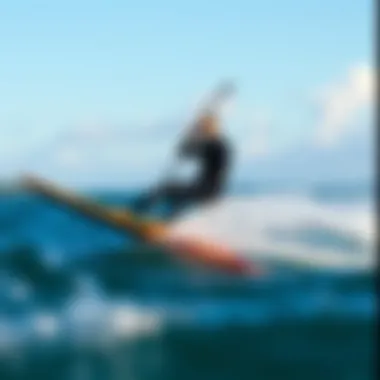
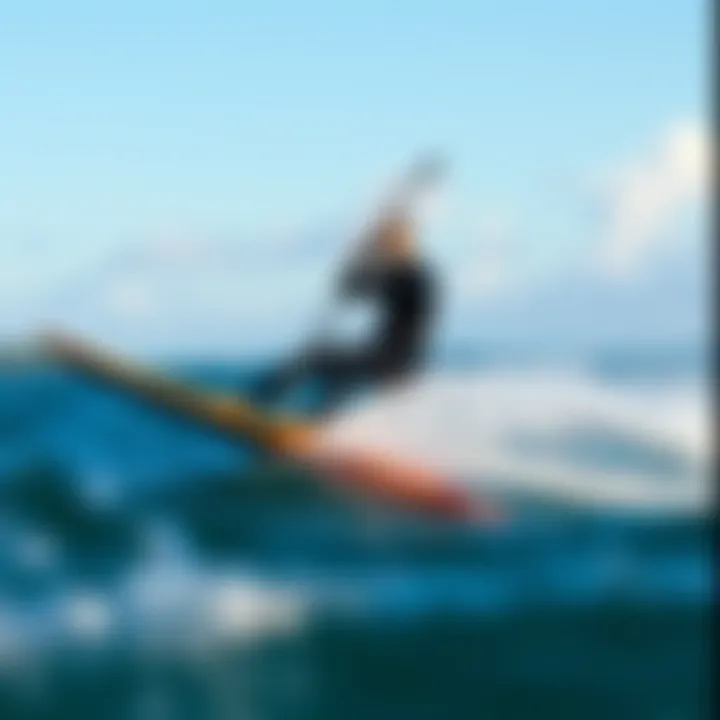
The intersection of conservation efforts and community engagement is vital in promoting the sustainability of wing surfing. Communities worldwide are coming together to preserve the environments that provide them endless enjoyment.
- Local Initiatives: Participating in or supporting local cleanup efforts can make a world of difference. Many coastal towns organize beach clean-up days, allowing surfers and residents to work side-by-side in maintaining their beloved surf locations.
- Organizations: Several groups, like Surfrider Foundation or Ocean Conservancy, advocate for ocean health. Joining these organizations amplifies the voice of the community, making collective strides towards better environmental practices.
- Education and Awareness: Educational programs that inform both amateurs and seasoned surfers about the environmental impact of their sport can foster a culture of sustainability. Workshops and meet-ups can serve not just as informative gatherings but also help forge bonds among participants passionate about nature.
"As surfers, we’re not just participants in this sport; we are part of a wider ecosystem that needs our protection and respect."
The growth of wing surfing is undeniably exciting, but it’s essential to be mindful of its environmental footprint. By championing sustainable practices and engaging in conservation efforts, the wing surfing community can ensure that their passion for the sport does not come at the expense of the natural beauty that supports it. This commitment to preserving the environment enriches the experience of every rider and guarantees the future of this exhilarating sport.
Cultural Significance of Wing Surfing
Wing surfing has carved a unique niche in the global watersport culture. It transcends mere recreation and has become a symbol of freedom and creativity on the water. With its roots stemming from multiple other sports, wing surfing taps into the visceral thrill of riding waves while incorporating the wind-driven aspects of sailing and kiteboarding. As this sport gathers steam worldwide, it also cultivates a community that prides itself on collaboration and shared experiences, making it a significant cultural movement.
Global Popularity and Trends
As with any sport, the trajectory of wing surfing's popularity is marked by evolving trends that reflect changing preferences among enthusiasts.
- Diverse Locations: While initially popular in coastal areas, wing surfing has spread inland, with lakes and rivers becoming bustling grounds for practitioners. Locations like Maui and the Mediterranean are still hot spots, but many enthusiasts are discovering hidden gems in fresh waters.
- Cultural Crossovers: Wing surfing integrates elements from various cultures, from Hawaiian surf traditions to the adventurous spirit of European kiteboarding. This blend not only enriches its practice but also allows participants to experience a connection to different lifestyles around the globe.
- Tech Adoption: There’s a notable trend toward using technology in wing surfing. From improved designs of wings to intelligent boards equipped with sensors, technology is not just augmenting performance but educating new users through data-driven insights.
- Eco-Conscious Movement: As awareness around environmental sustainability increases, many wing surfers are led by a strong sense of responsibility towards preserving the aquatic environments they cherish. This affinity has spurred the community into action, advocating for cleaner oceans and promoting eco-friendly gear.
Community and Lifestyle Aspects
The sense of community within wing surfing is palpable; it's not just about the sport but about forming connections with like-minded individuals.
- Social Networks: Platforms like Facebook and specialized forums on Reddit serve as hubs where wing surfers share tips, experiences, and gear recommendations. Newcomers receive encouragement and seasoned surfers impart wisdom, fostering a culture that thrives on shared knowledge.
- Events and Gatherings: From informal meet-ups to well-structured competitions and festivals, these activities create a bonding atmosphere. Events like the Wing Foil Cup draw enthusiasts from across the globe, showcasing not only athletic prowess but also reinforcing friendships that can last a lifetime.
- Lifestyle Integration: Wing surfing resonates with a sense of adventure and an escape from daily routines. Many aspire to integrate this sport into their lifestyles, turning weekends into excursions that may span across scenic coastlines or serene lakes.
"In wing surfing, it's not just about skill but the joy of being part of a vibrant community that digs deep into the essence of life on the water."
In summary, the cultural significance of wing surfing extends beyond its technical aspects and the thrill of the ride. It embodies a global movement characterized by community bonding, environmental consciousness, and an insatiable thirst for exploration. As awareness grows, so does the hope that this sport will continue to inspire, enrich lives, and promote a harmonious relationship between enthusiasts and nature.
Future Innovations in Wing Surfing Foil
The landscape of wing surfing and foiling is ever-evolving. As technology advances, so does the potential for enhanced performance, safety, and accessibility in this exhilarating sport. Understanding future innovations is crucial not only for enthusiasts who want to stay ahead of the curve, but also for manufacturers and instructors aiming to provide the best experience for their users. Innovating beyond the present capabilities ensures not just a more thrilling ride, but also emphasizes safety and environmental responsibility.
Emerging Technologies
Recent developments have introduced a range of new technologies that stand to revolutionize wing surfing and foiling. Here are some lines of thought regarding these advancements:
- Smart Foil Systems: These systems integrate sensors and AI to adaptively adjust the foil’s position based on real-time conditions. This could provide a smoother ride by optimizing lift and drag, allowing riders to focus more on their experience rather than mechanics.
- Lightweight Materials: Advancements in materials science have led to the development of ultra-lightweight yet sturdy compounds. For instance, the use of carbon fiber and advanced polymers can significantly decrease the weight of wings and boards, improving maneuverability and reducing energy consumption.
- Inflatable Wings: New inflatable wing designs have emerged that maintain performance without compromising durability. These wings offer convenience in transport, making it easier for riders to journey to remote locations, thus expanding the sport's geographic reach.
- Eco-Friendly Manufacturing: As awareness of environmental issues grows, some companies are exploring biodegradable materials and sustainable production methods. This aligns with a growing trend of sustainability in water sports, which can only improve the sport’s acceptance among the environmentally conscious crowd.
Innovation is key for attracting new riders and retaining existing ones, as it fosters an understanding of how technology can enhance their experience on the water.
Predictions for the Sport's Evolution
The future of wing surfing and foiling hinges not only on technological advancements but also on evolving trends. The following predictions offer a glimpse into where the sport might be heading:
- Increased Accessibility: As technology makes gear lighter and easier to handle, beginners will find entry into wing surfing less daunting. Expect more schools and training programs to pop up, featuring beginner-friendly equipment that promotes a quick learning curve.
- Integration with Other Sports: We may see more hybrid sports emerge, much like how kiteboarding evolved. Combining elements from surfing, sailing, and even snowboarding could redefine how practitioners approach wing surfing. For instance, linking foil technology with wakeboarding could lead to exciting new experiences.
- Growth of Online Communities and Resources: With the present influence of social media and expert-led platforms, knowledge-sharing will soar. YouTube tutorials, Instagram influencers, and dedicated forums on platforms like Reddit will continue to grow, providing a wealth of information accessible to newcomers and veterans alike.
- Regulatory Developments: As the sport gains popularity, regulatory frameworks might emerge to ensure safety and responsible user practices. This could propel the establishment of professional guidelines and competition rules, potentially bringing about recognized championships and events.
The End
The world of wing surfing foil presents an exciting landscape for both newcomers and seasoned athletes alike. This article has meticulously explored the various facets of the sport, underscoring its historical evolution, essential gear, and safety implications. In today’s fast-paced world, understanding the intricate details of wing surfing and foiling can greatly enhance not only one’s skills but also their enjoyment of the water.
Recap of Key Points
Reflecting on the content covered:
- Defining the Sport: Wing surfing foil merges the thrill of wind power with the graceful dynamics of foiling, creating a unique experience on the water.
- Historical Context: A journey through time reveals how wing surfing has evolved, from its nascent forms to the advanced technologies we see today.
- Fundamentals and Techniques: Mastering basic techniques is essential for beginners, while experienced surfers can refine their skills with the right understanding of mechanics.
- Gear Selection: Knowing how to choose the right wing, board, and foil can significantly affect performance and safety.
- Safety Protocols: Awareness of potential risks and adherence to safety guidelines cannot be overstressed, as it ensures a more enjoyable surfing experience.
- Environmental Impact: A commitment to sustainability is crucial, as watersports enthusiasts play a role in conserving natural marine environments.
- Cultural Significance: The global community continues to expand around wing surfing, highlighting its growing popularity and the lifestyle it fosters.
- Future Innovations: The horizon holds promise for emerging technologies that will further enhance the sport and provide new opportunities for growth.
The Ongoing Journey in Wing Surfing Foil
As we navigate the waters of wing surfing foil, it becomes evident that this sport is more than just a recreational activity; it’s a journey of continuous learning and adaptation. Athletes, coaches, and educators alike need to stay attuned to evolving techniques and innovations. With new trends emerging regularly, the community must embrace change and remain open to new experiences both on and off the water.
In addition, the mutual support found within local and global communities fosters an environment ripe for growth. Enthusiasts sharing knowledge, tips, and experiences can lead to profound personal advancements for individuals and a richer collective experience for all. Therefore, remaining engaged with the community—whether through forums on sites like reddit.com, or participating in events listed on facebook.com—is essential.
Ultimately, wing surfing foil embodies a fusion of skill, passion, and respect for the environment. By engaging with the sport, individuals can ride the waves of joy and satisfaction, while also committing to the values of sustainability and community spirit. This ongoing journey continues to inspire and shape the landscape of wing surfing, promising an exhilarating future for those who dare to embrace it.


